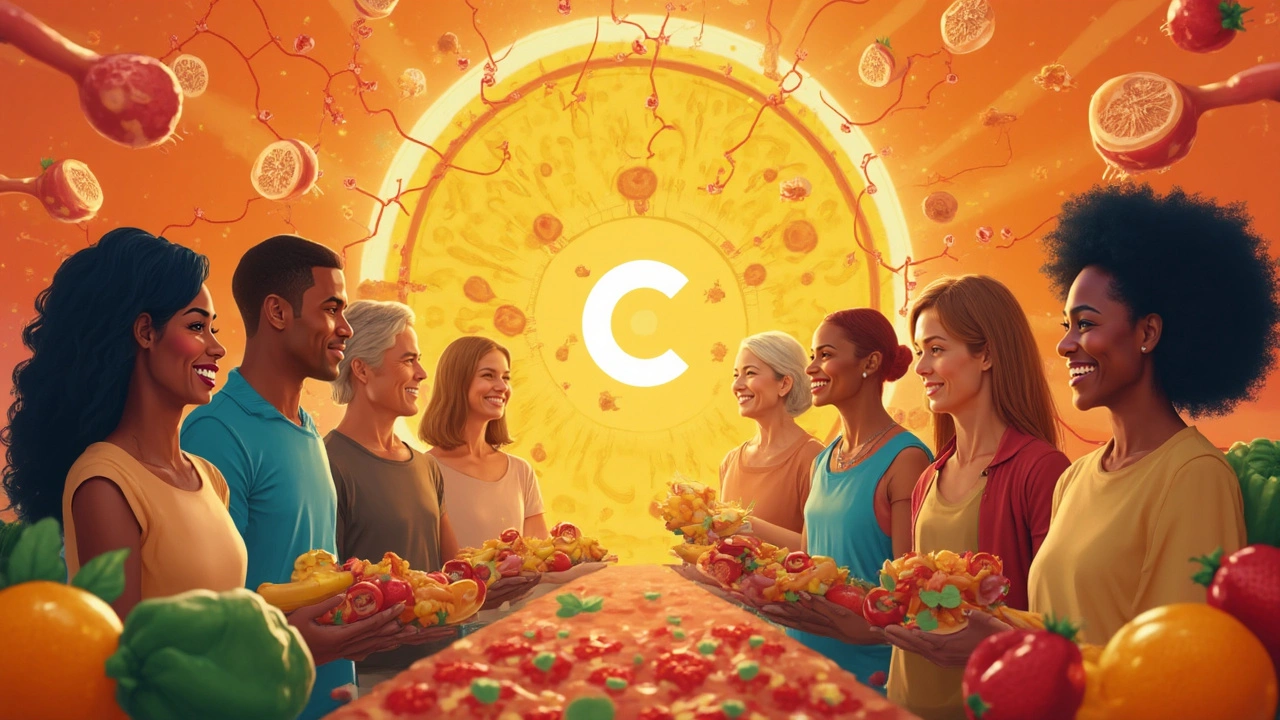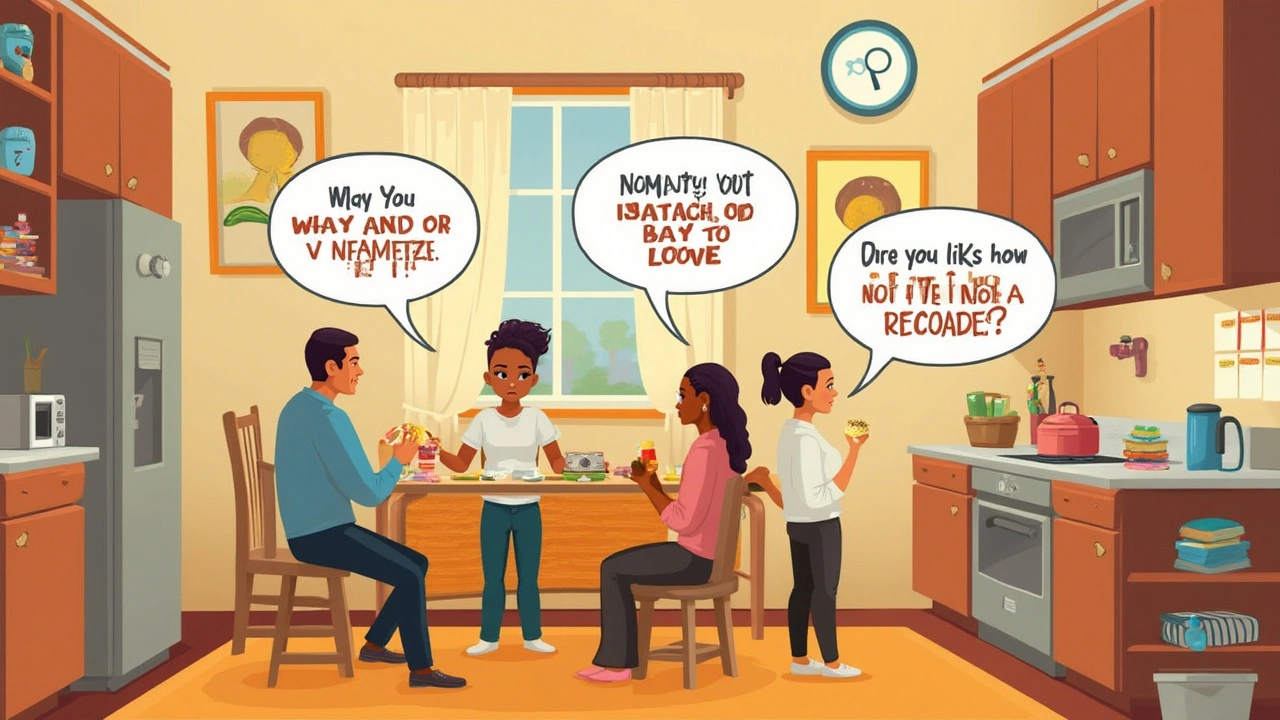
Think you know vitamin C? Sure, you can probably rattle off that it’s “good for you” or “in orange juice,” but ascorbic acid—vitamin C’s street name—does things in your body you might not believe. Sailors once chugged lemon juice and lived longer for it. Today, we pop colorful gummies and debate if loading up on C really keeps sniffles away, or if that’s just wishful thinking your mom told you. So what’s the deal with ascorbic acid anyway? Stay with me here—I promise there’s a wild road from wound healing to scurvy to surprisingly heated breakfast debates.
What Exactly IS Ascorbic Acid?
Let’s start at the atomic level, where ascorbic acid is a small, water-soluble molecule with the chemical formula C6H8O6, and it’s way more than a pantry staple. It’s an organic acid, and its story is pretty epic. The shiny white crystals you see in supplements are nothing like the tart zing hiding in strawberries, peppers, or even kale. Humans, for some quirk of evolution, lost the ability to make ascorbic acid in our own livers. It’s odd, considering rats and goats make their own supplies without a second thought. That’s why we have to hunt it down in food. Our bodies take the stuff and use it everywhere—from building fresh skin after you graze your elbow, to battling the damaging molecules that our bodies create just from living and breathing.
Ascorbic acid is a master multitasker. In your bloodstream, it acts as an antioxidant, which means it neutralizes free radicals—volatile little buggers that mess with your DNA and can age you faster. It’s also critical for making collagen, a protein that acts like scaffolding in your body. Can’t make collagen? You risk bleeding gums and your skin won’t heal right. Weirdly, British sailors in the 1700s found this out the hard way as they’d get scurvy on the high seas with nothing but salted meat for weeks. Their gums would bleed, their teeth would fall out, and they’d get oddly depressed or even die unless they chowed down on citrus. Lemons and limes were literal lifesavers—and that’s why Brits got nicknamed "limeys" by the Americans.
Let’s talk numbers. An adult needs about 90 mg of ascorbic acid daily (that’s like one kiwi or a hefty serving of bell peppers). But more isn’t always better. Your kidneys flush out the extra—you just pee it out. Not dangerous, but there’s no point doubling down unless your diet’s truly lacking or you’re under a lot of stress (smokers, athletes, and folks recovering from injuries sometimes need more).
The Many Ways Ascorbic Acid Hits Your Life
So, where does ascorbic acid show up besides that glass of OJ? Just check your kitchen: It’s in citrus, of course, but also in broccoli, Brussels sprouts, potatoes, strawberries, and kiwi. My dog Kepler loves red bell peppers—he practically dances when he smells them slice. Turns out, bell peppers have more vitamin C per gram than most citrus fruits. Ascorbic acid in food isn’t just good for you; it also keeps what you eat looking fresh and colorful. That vivid color you see in fruit salads? That’s partly ascorbic acid preventing oxidation—slowing down that sad brown mush bananas turn into too fast.
Bakers and food companies love ascorbic acid for other reasons: sprinkle it onto dough and it pumps up yeast action, perfect for lighter, fluffier bread. In canning, it prevents food from losing its color and taste. If you’re preserving apples at home, a splash of lemon juice (hello, ascorbic acid) will hold their snap and shine. If you look at ingredient lists, you’ll find ascorbic acid or E300 hiding as a “preservative.”
Of course, you get the supplement argument: pills, gummies, powders—every form screams its health benefits. But most big studies show getting ascorbic acid from food works better for long-term health than the tablet. Take a look at this table of common sources, and you might be surprised by what lands at the top.
| Food Source | Average Vitamin C (mg per 100g) |
|---|---|
| Red bell pepper | 120 |
| Kiwi | 93 |
| Broccoli (raw) | 89 |
| Orange | 53 |
| Strawberries | 59 |
| Potato (cooked) | 20 |
Packed in nature, right? But it doesn’t end with food. Skincare fans chase after ascorbic acid serums to chase away wrinkles and brighten skin. Elise, my wife, swears by her vitamin C serum—she says it’s the secret to her glowing skin (I’m skeptical, but hey, it’s working for her). Vitamin C is one of the few ingredients with real research showing it can boost collagen and slow photoaging if you use a stable version.

Does Ascorbic Acid Really Boost Your Immune System?
There’s always been this myth: chugging vitamin C will make you invincible to colds. Truth is, the reality is nuanced. Yes, ascorbic acid is critical to your immune function. Your white blood cells stockpile it and it’s involved in making sure your barriers—skin, for instance—stay strong. When you come down with a cold, your body burns through more vitamin C. But stacking up mega doses doesn’t really prevent colds for most folks. A huge review from the Cochrane group—kind of the gold standard for evidence—found that for most people, popping extra C won’t stop you from getting sick, but if you start taking it at the first sign of a cold, you might shorten how long you feel crummy.
That said, for people living in cold climates, or those under extreme stress (hello soldiers, marathoners!), a daily dose can drop the odds of catching a cold in the first place. So it pays to know yourself: if you’re pushing your body to the edge, keep your vitamin C up. Here’s where it gets interesting: vitamin C may actually boost the function of phagocytes—those immune cells that gobble up invaders. It even ups your blood’s antioxidant capacity in a measurable way. The cold-busting effect is subtle, but wound healing? That’s where it’s unmistakable—ever notice cuts healing slower when you’re run down? Not just in your head.
One thing that always got me: ascorbic acid’s role in iron absorption. If your meals are plant-based or heavy on whole grains, vitamin C actually helps you pull more iron from food. Squeeze lemon over spinach, and your body grabs more iron out of it. That’s a trick vegetarians swear by. Don’t waste that hack.
Hot Tips, Hidden Risks, and Wild Myths about Ascorbic Acid
There are tons of ideas people throw around about ascorbic acid. Let’s bust a few and get real. “Mega doses cure everything.” Nope! Your kidneys chuck out the extra, and gigantic loads (think several grams a day) may bring stomach aches, diarrhea, or, in rare cases, encourage kidney stones—especially if you’re prone to those or have a kidney disorder. For most healthy people, sticking around the recommended 65–90 mg daily just works. If you want a bigger boost during flu season, don’t go overboard.
Can you get too little? Yes. Scurvy is basically extinct in rich countries, but weirdly, it pops up in people avoiding all fresh food, in extreme diets, or in folks who just munch on nothing but convenience food for months. Symptoms are subtle at first—fatigue, joint pain, easy bruising—before things get ugly. But even mild deficiency can mess with mood, skin, and gum health. Don’t let it slide.
Fun fact: ascorbic acid can be destroyed by heat and oxygen. So boiling veggies for too long nukes some of the good stuff. Steaming or eating raw keeps those vitamin C levels up. Cut fruit loses vitamin C if you let it sit around too long, so prep fresh.
Supplements are everywhere—from supermarket shelves to protein powders. Some promise “buffered” forms for “superior absorption,” but big studies haven’t shown they beat standard ascorbic acid for most people. Food first, supplements as backup. Kids, older adults, pregnant folks, and smokers sometimes need more, but don’t let ads fool you—it’s not a magic bullet.
Lastly, stray into the weird world of biohacking and you’ll stumble on people taking IV vitamin C for everything from skin to chronic disease. The science is pretty shaky here: high-dose IV vitamin C outside real medical scenarios (like certain chemo regimens or critical illness) is more Instagram than evidence. If your buddy is raving about a “vitamin drip bar,” remind them a good salad is just as effective for most people—and way cheaper.
Want to geek out more or just keep your daily intake simple? Go for these tips:
- Eat your vitamin C-rich foods raw or lightly cooked for the most punch.
- Pair citrus or berries with iron-rich plants—like beans or spinach—for max benefit.
- Don’t sweat supplements if your diet covers the basics, but keep them handy for travel or busy spells.
- Store cut fruit tightly wrapped in the fridge to slow vitamin C loss.
- Rotate your sources—don’t think only oranges! Strawberries, peppers, and broccolini all deliver.
Ascorbic acid is one of those nutrients that’s woven into the fabric of our daily lives, often more than we notice. From science labs discovering cures for scurvy, to modern kitchens, to Elise’s skincare rituals—it’s a tiny molecule with a huge story, and one worth paying attention to long after cold season ends.




9 Comments
Ascorbic acid is just capitalism’s favorite vitamin. We turned a lifesaving nutrient into a gummy candy with glitter and called it wellness. The real story? Our ancestors lost the ability to make it because they lived in fruit-rich environments. Now we live in suburbs and think a $12 bottle of ‘immune boost’ powder fixes everything. We’re not sick. We’re just lazy.
And don’t get me started on IV drips. If you’re paying $200 for a vitamin C infusion while eating fast food, you’re not healing. You’re performing.
Food first. Always. The rest is theater.
Let’s be clear: the Cochrane review you cited is methodologically sound but underpowered for subpopulations. The effect size for cold duration reduction in high-stress cohorts is statistically significant at p<0.03 with a 95% CI of 0.14–0.38 days. You’re conflating population-level efficacy with individualized bioavailability. The bioavailability curve for ascorbic acid is non-linear beyond 200mg due to saturation of SVCT1/2 transporters. Supplemental forms don’t matter unless you’re dealing with oxidative stress markers in serum-then you need pharmacokinetic modeling, not anecdotes.
Also, ‘bell peppers have more than citrus’ is trivially true but misleading. Per 100g? Yes. Per serving? No. One orange is 70mg. One pepper is 120mg. But you eat one orange. You don’t eat a whole bell pepper raw as a snack. Ergo, dietary adherence trumps nutrient density.
And stop romanticizing sailors. They didn’t drink lemon juice because they cared about science. They drank it because they were dying. Empirical observation ≠ evidence-based medicine.
Brooooooo 😤 ascorbic acid is literally the OG antioxidant 🤯
But here’s the thing-your body doesn’t care if it’s from a kiwi or a gummy bear 🍬
It’s all just C6H8O6, man. The ‘food first’ crowd is just nostalgic for when food wasn’t processed. But if you’re eating chips and then popping a C pill? You’re still winning. Just win smarter.
Also, IV vitamin C? It’s not fake. It’s just not for you. Unless you’re in a hospital with sepsis. Then yeah, it’s a legit tool. Don’t hate the drip. Hate the markup. 💸
While the article presents a comprehensive overview of ascorbic acid’s biological functions, I would like to respectfully emphasize the importance of contextualizing dietary recommendations within cultural and socioeconomic frameworks. In many parts of the world, access to fresh bell peppers or kiwis is limited due to seasonality, transportation infrastructure, or economic constraints. For these populations, fortified foods or low-dose supplementation may represent not merely a convenience, but a public health imperative.
Furthermore, the assertion that ‘food first’ is universally superior assumes a level of nutritional literacy and food sovereignty that is not universally present. While whole-food sources are ideal, they are not always feasible. We must avoid moralizing nutrition.
Ascorbic acid is not a luxury. It is a biological necessity. Our response should be pragmatic, not purist.
Love this breakdown. Seriously. I used to think vitamin C was just for colds. Turns out it’s like the unsung hero of your whole body.
My grandma used to put lemon juice on her potatoes. I thought she was weird. Now I know she was just doing science without knowing it.
Also, I started eating raw broccoli with peanut butter. Weird combo. But it’s delicious and I feel like a superhero.
Keep it simple. Eat colorful. You’re already doing better than most.
Correction: The recommended daily allowance for adult males is 90 mg, not 65–90 mg. The 65 mg figure applies to females. This is a minor but important distinction. Furthermore, the claim that ascorbic acid is destroyed by heat is accurate, but the rate of degradation is dependent on pH, oxygen exposure, and duration of heating. Boiling reduces vitamin C content by approximately 25–50%, whereas steaming reduces it by 10–20%.
Additionally, the assertion that ‘buffered’ forms offer superior absorption lacks robust clinical validation. Ascorbic acid in its standard form achieves near-complete absorption at doses below 200 mg. At higher doses, absorption efficiency declines exponentially, regardless of formulation.
Food sources remain optimal due to synergistic phytonutrients and bioavailability modulators absent in isolated supplements.
I used to think vitamin C was just something my mom made me drink when I had a cold, but then I started losing my hair and my skin turned gray and I couldn’t stop crying and I thought I was dying and I Googled it and it said ‘maybe you’re deficient’ and I ate a whole bag of strawberries and I cried again but this time because I felt alive and I didn’t know you could feel so much from a fruit and now I keep a basket of kiwis by my bed and I eat one before I sleep and I whisper thank you to the universe and I don’t know if it’s the vitamin or the ritual but I swear I feel lighter and I don’t care if science says it’s placebo because my soul knows better and I wish everyone could feel this safe in their body even for one day
Biggest thing people miss? Vitamin C doesn’t work alone. It teams up with vitamin E, zinc, and flavonoids. That’s why whole foods beat pills. The synergy is real.
Also, if you’re taking C for immunity, pair it with sleep and hydration. No supplement fixes a 3am scroll session.
And yes, your dog loves bell peppers. Mine does too. He steals them off the counter. We’re all just trying to survive on plants and hope.
Keep it simple. Eat the rainbow. You’re doing fine.
ASCORBIC ACID IS THE SPARKLE DUST OF LIFE 💫
It’s not just a vitamin-it’s your skin’s fairy godmother, your immune system’s hype squad, your broccoli’s bestie.
Stop thinking of it as a supplement. Think of it as a vibe. A juicy, zesty, crunchy, glowy vibe.
Put it on your face. Eat it like candy. Squeeze it over your lentils like a goddamn wizard.
And if someone tells you it’s a scam? Smile. Tell them you’ve got the glow. And they don’t.
Live bright. Eat wild. Stay tart.
- your vitamin C priestess 🍊✨